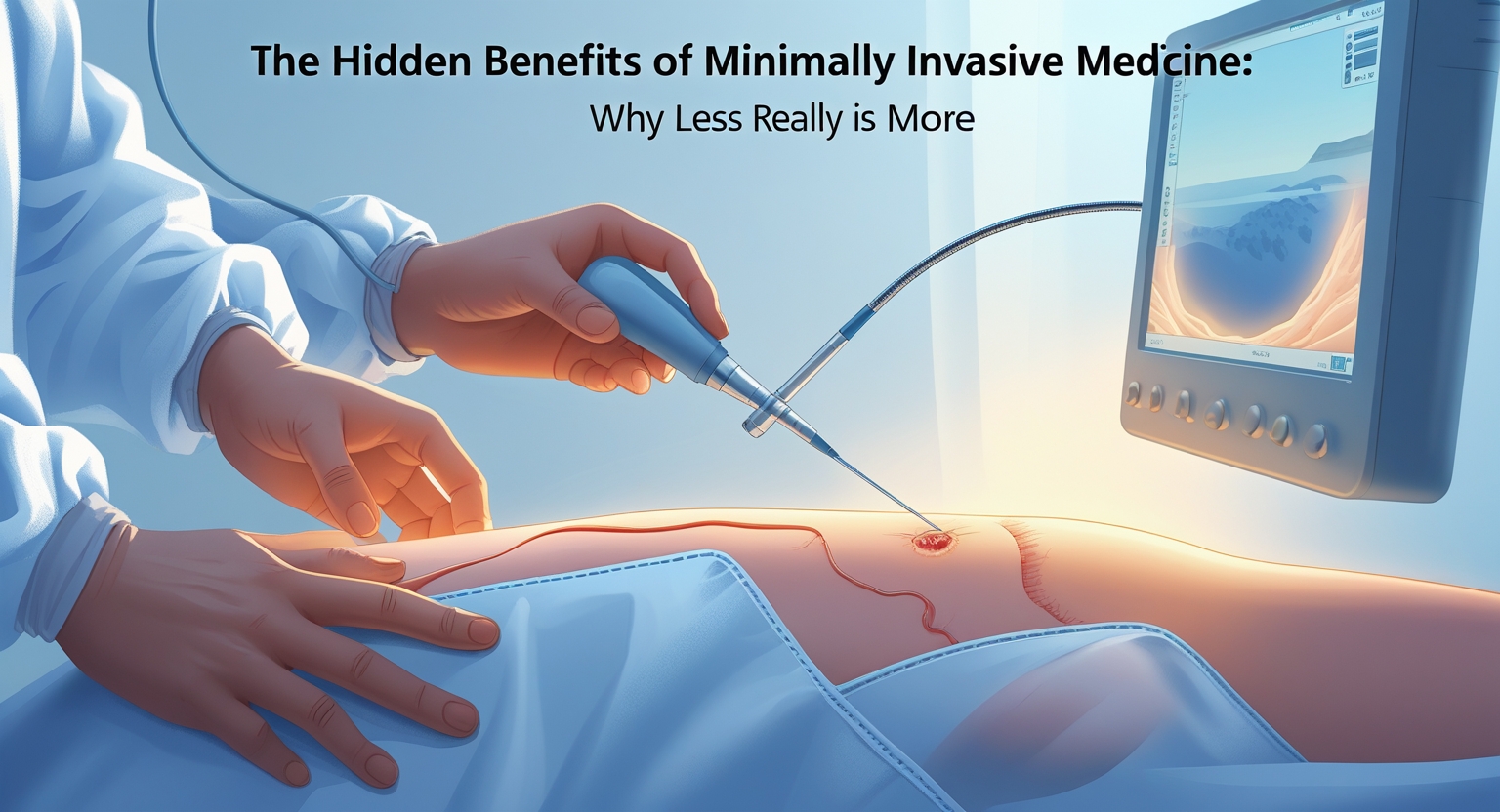Blog Post
The Hidden Benefits of Minimally Invasive Medicine: Why Less Really Is More

When most people think of medical procedures, they often picture long hospital stays, major incisions, and lengthy recovery times. Thanks to advances in minimally invasive treatment, that image is quickly changing. Instead of large surgical cuts, these procedures often require only a tiny incision, guided imaging, and advanced tools to treat a wide range of conditions. For patients, this approach often means less pain, quicker recovery, and better outcomes.
What Does Minimally Invasive Medicine Mean?
Minimally invasive medicine uses advanced imaging and specialized equipment to diagnose and treat conditions through very small openings in the body. Unlike traditional surgery, these procedures avoid large incisions and heavy disruption to healthy tissues. Radiology specialists of Florida and across the nation are leading this change, making treatments safer and more effective.
Why Less Really Is More in Healthcare
The phrase “less is more” fits perfectly with this field. By doing less physical cutting, patients often get more in return: less downtime, fewer complications, and more confidence in their care. For example, procedures like varicocele embolization treatment or hemorrhoid embolization interventional radiology are effective alternatives to conventional surgery, with patients able to return to daily activities much faster.
Here are some of the most significant hidden benefits:
Faster Recovery Times
One of the clearest advantages is how quickly patients bounce back. Traditional surgery often requires weeks or even months of rest. With minimally invasive procedures, many people return to normal life in days. For instance, fractured spine recovery in Daytona Beach, FL, can often be supported with spinal fracture treatment that avoids open surgery, reducing recovery time dramatically.
Reduced Pain and Scarring
Smaller incisions mean smaller scars and less trauma to the body. Pain after minimally invasive treatment is usually much lower compared to open surgery, reducing the need for strong pain medications. For patients struggling with chronic facet joint pain treatment, this approach can bring lasting relief without the same level of discomfort.
Lower Risk of Complications
Major operations carry higher risks of bleeding, infection, and anesthesia-related problems. Minimally invasive medicine lowers those risks. Guided imaging helps specialists reach only the affected area, minimizing damage to surrounding tissues.
Outpatient Convenience
Many minimally invasive procedures don’t require an overnight hospital stay. Treatments such as hemorrhoid embolization procedure or pelvic congestion syndrome treatments are often performed on an outpatient basis, allowing patients to go home the same day. This makes care more accessible for people with busy schedules or limited ability to take time off.
Broader Range of Treatments
What’s surprising to many is just how many conditions can be treated with these methods. Examples include:
- Vein care: Varicose veins laser therapy and spider vein treatment in Long Beach are popular choices for improving comfort and appearance.
- Cancer care: Minimally invasive options like targeted therapies can play a role in the best treatment for liver cancer or metastatic liver cancer.
- Urology: Men experiencing enlarged prostate symptoms now have access to effective bph medical treatment in Daytona Beach, FL, without the need for invasive surgery.
- Spine care: Treatment for spinal compression fracture can provide pain relief and stability without traditional open procedures.
Better Quality of Life
Because recovery is quicker and less painful, patients are able to return to work, family responsibilities, and hobbies much sooner. Whether it’s fractured spine recovery or relief from hemorrhoids, the benefit is not just medical—it’s personal.
The Growing Role of Imaging and Radiology
Minimally invasive medicine would not be possible without advanced imaging. Radiology associates in Daytona Beach, FL, and vascular interventional specialists across the country use real-time imaging to guide catheters, wires, or needles exactly where they are needed. This precision allows for highly targeted care while sparing healthy tissues.
Why Patients Are Choosing This Path
The demand for these treatments continues to rise. According to the National Institutes of Health, minimally invasive procedures account for more than half of all surgeries performed in the U.S. today, and that number is growing every year. Patients are seeking options that combine safety, effectiveness, and convenience, which is exactly what these approaches deliver.
Key Advantages at a Glance
- Shorter recovery time compared to open surgery
- Less post-procedure pain and scarring
- Lower risk of infection and complications
- Outpatient procedures in many cases
- Wide range of conditions treated effectively
- Improved quality of life and faster return to daily routines
Final Thoughts
Minimally invasive medicine is reshaping the way we think about treatment. From joint pain to metastatic liver cancer, from vein care to spine health, patients now have safer, faster, and more effective options than ever before. With fewer risks and greater comfort, it’s easy to see why less really is more in modern healthcare.
If you are exploring minimally invasive treatment options for conditions like spinal fractures, vein disease, or chronic pain, consider reaching out to the specialists who focus on these advanced techniques. Learn more at Interventional Specialists of Florida.